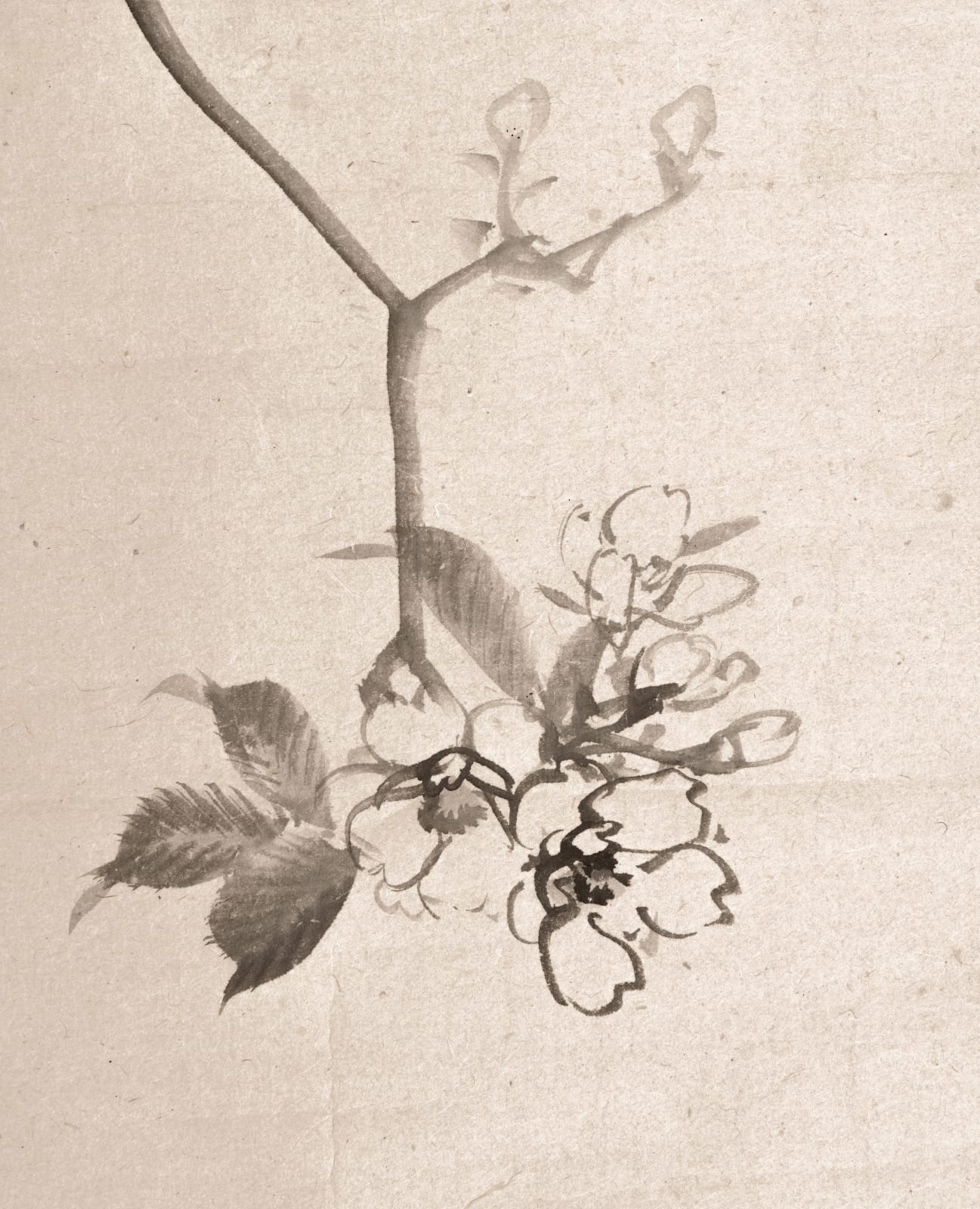




Gito Shibata
Cherry tree, ca. 1790
sumi ink on paper
51 1/4” x 11 1/2” ; scroll, 85 1/2” x 17”
Further images
The Shijo School of painting is known for its deft use of allusion. In distilling the essential qualities of natural elements, this style stimulates the imagination and suggests more than...
The Shijo School of painting is known for its deft use of allusion. In distilling the essential qualities of natural elements, this style stimulates the imagination and suggests more than what is simply depicted by the drawing. This excellent work by Gito is a case in point. Among numerous paintings of cherry blossoms, this one stands apart. Just a couple of flowers at the bottom of the branch are sharply drawn while the rest fade into "soft focus". Our eyes begin at the bottom of the picture and gradually wander up to along the suggestion of a very old trunk. This journey guides us into a deeper state. Moving beyond the visual, we are left to contemplate the Cherry Tree. As the painting leads us into meditative clarity, we begin to notice multitudes of variation within the colors and forms of the blossoms. As the Japanese say, "[the] sumi ink expresses 800 colors.”
The painting is inscribed with a poem by Kaiho, Seiryu* (1755 - 1817). Seiryu was a forward-looking scholar and calligrapher. It was common for painters and scholars to collaborate at the time.
The poem reads:
People in the neighboring countries,
Please take a look.
Here is the best flower
On the earth
This was a strikingly new idea on Japan's relationship with the world at the time. Seiryu's reference to "on the earth” shows his understanding of a broader worldview, in which Japan is just one part of the whole: the earth. This collaboration thus satisfies both aesthetically and intellectually.
About the Artist
Shibata, Gitô (1780 - 1819) was born in Bizen and moved to Kyoto, where he went to study with Matsumura, Goshun (1752-1811), the founder of the Shijô school of painting. He soon became an important member of the school, specializing in landscapes and kachôga (bird and flower paintings.)
The painting is inscribed with a poem by Kaiho, Seiryu* (1755 - 1817). Seiryu was a forward-looking scholar and calligrapher. It was common for painters and scholars to collaborate at the time.
The poem reads:
People in the neighboring countries,
Please take a look.
Here is the best flower
On the earth
This was a strikingly new idea on Japan's relationship with the world at the time. Seiryu's reference to "on the earth” shows his understanding of a broader worldview, in which Japan is just one part of the whole: the earth. This collaboration thus satisfies both aesthetically and intellectually.
About the Artist
Shibata, Gitô (1780 - 1819) was born in Bizen and moved to Kyoto, where he went to study with Matsumura, Goshun (1752-1811), the founder of the Shijô school of painting. He soon became an important member of the school, specializing in landscapes and kachôga (bird and flower paintings.)
Signup for our Newsletter
You will receive two emails a month from us. One introduces artworks and design works from Kyoto's hidden sources and the other is stories from Misako, sharing insights into Japanese culture.
* denotes required fields
为了回应您的查询,我们将根据我们的隐私政策处理您提供的个人数据。




